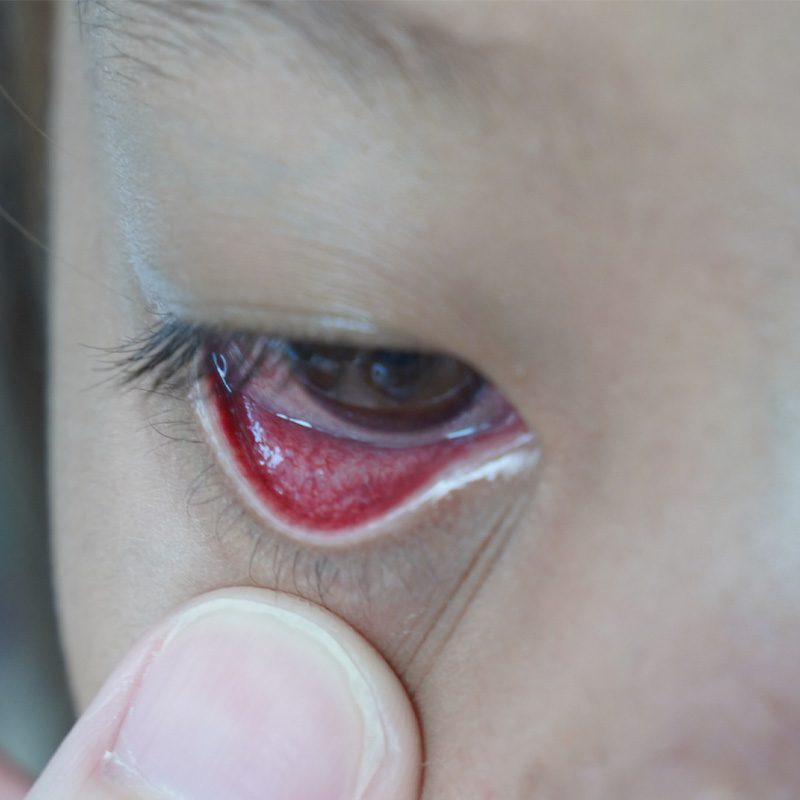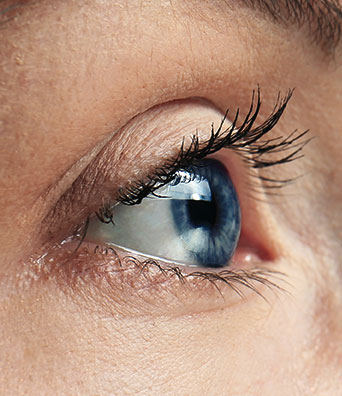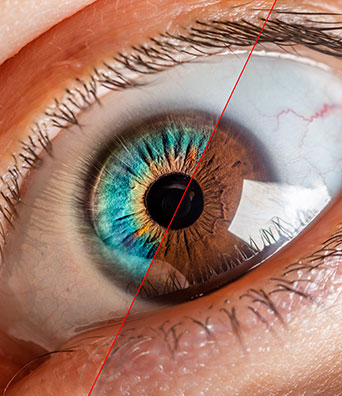Pediatric Ophthalmology Dubai
Pediatric ophthalmology specializes in children’s eye care. Doctors who are specialized in children’s eyes are known as pediatric ophthalmologists. While there are different eyes tests performed in children under pediatric ophthalmology, below are some common ones:
Vision assessment – A test conducted to check a child’s visual activity and is conducted based on the child’s age.
Refractive assessment – While this test can be done as a part of a routine eye exam, it’s mostly done to identify a child’s needs for glasses or contact lenses. This test is performed after a pupil dilation to examine it better. Refractive assessment also enables to determine the right power of a glass or contact lens a child needs.
Motility exam – This test is conducted to measure the alignment of a child’s eye better for treating conditions such as strabismus (misalignment of eyes).
Fundus test – While this is done as a routine eye exam, it’s an important part of the pediatric physical examination. A fundus test helps in identifying the presence of any eye diseases that are linked with high blood pressure or diabetes. This test also helps identify life-threatening health conditions for children, such as shaken baby syndrome or increased intracranial pressure.
Lazy Eye Can Develop From Birth To
Age 6
Lazy Eye Can Be Corrected
In 99%
If Treated Before That Age.
A paediatric ophthalmologist is a consultant ophthalmologist who has several years of specialised training above their general ophthalmology experience. If you think that your child’s eyes are not developing correctly because there is strabismus, a droopy eyelid, lazy eye, or if one eye appears to be cloudy or have a white patch where the pupil should be, then it is vital that a paediatric eye doctor in Dubai assess them. Quirónsalud has paediatric ophthalmologists who are the best in their field.
Children may present eye diseases similar to those of adults, as well as other childhood diseases. It is essential to monitor premature babies to detect and treat retinopathy of prematurity. Children’s eyes are in constant growth until the age of 7 or 8. In fact, visual acuity, which is practically null at birth, should reach 100% by five years of age. Any ocular anomaly that is not diagnosed early may hinder the development of sight, and cause defects that can last a lifetime.
Some of the eye exam tests performed in children include:
Vision Assessment
Determination Of Refractive Error
Motility Examination
This is a measurement of alignment of the eyes for planning treatment of strabismus (misalignment of eyes).
Biomicroscopy & Dilated Fundus Examinations
Symptoms Of Paediatric Ophthalmology Disease
Some of the treatments provided in paediatric ophthalmology include prescriptions for glasses or contact lenses and treatment for eye infections, inflammatory conditions or glaucoma. Surgical procedures for the treatment of blocked tear ducts, muscle surgery for strabismus, pediatric cataract extraction and use of intraocular lens can also be performed by a paediatric ophthalmologist.
- Redness
- Erythema
- Induration
- Tenderness
- Warmth of the periorbital tissues
- Tears Obstruction
- Opacity
- Misalignment
Pediatric Eye Doctor FAQs
The treatments provided by pediatric ophthalmologists vary depending on the eye condition of children and their age. Some common treatments provided by pediatric ophthalmologists include prescribing for pediatric glasses or contact lenses in the right power and providing treatments for eye issues such as inflammatory conditions, eye infections, or glaucoma.
A pediatric ophthalmologist can also provide children with surgical procedures to treat muscle surgery for strabismus, pediatric cataract extraction, and blocked tear ducts. These treatments vary depending on the pediatric ophthalmologist and their respective clinics.
Usually, children need glasses for different reasons. Some of these reasons don’t necessarily work the same way for adults. This is because a child’s eye grows and develops with time, especially in their 5-6 years of life. So using glasses play an important role in supporting the normal and healthy development of a child’s eye. Some of the reasons children may need glasses are not necessarily because his/her eyesight is weak. Below are some of the common reasons why a child may need glasses:
- Some children may need glasses to provide them a better vision. This is done primarily to enable a child to focus better in his/her environment.
- Some children may be tested for amblyopia or “lazy eye.” This is an eye condition where there is a difference in prescription between the two eyes. In such cases, one eye may be normal and healthy without the need for glasses, whereas the other is weak and has a significant need for a glass caused by near or farsightedness or astigmatism. In such a situation, children are prescribed glasses for strengthening the vision of the weak eye only.
- Some children may need glasses to straighten their eyes when they are crossed or misaligned (also known as strabismus).
- In cases where one eye of a child has poor vision, he/she may need to wear glasses to protect the other eye (healthy eye).
Conjunctivitis
Ophthalmia Neonatorum
Ophthalmia neonatorum is defined as conjunctivitis within the first month of life. There are three main types of neonatal conjunctivitis they are chemical, bacterial, and viral.
Childhood Conjunctivitis
Acute conjunctivitis is the most common eye disorder in young children and is the most frequent ophthalmologic complaint seen in the pediatric emergency department.
Orbital & Periorbital Cellulitis
Lacrimal System Infections

Congenital
Nasal lacrimal Duct Obstruction
The most common congenital ophthalmologic finding in newborns is nasal lacrimal duct obstruction. Tears are produced in the lacrimal gland which rests within the temporal portion of the superior lid. They then circulate over the eye toward the punctum located in the nasal corner of the eye where the two lid margins unite. Typically, tears drain through the punctum and canalicular system into the nasolacrimal sac and then into the duct which drains intra nasally through the valve of Hasner. When the drainage path is obstructed, most commonly at the level of the valve of Hasner, patients present with watery discharge from the eye, often bilaterally.
Congenital Cataracts
A cataract is an opacity of the lens of the eye requiring prompt diagnosis and treatment to prevent partial or complete blindness. Congenital cataracts can be present at birth and associated with certain congenital infections such as rubella, toxoplasmosis, HSV, or cytomegalovirus. They can also develop in the first several months of life secondary to several metabolic conditions, such as galactosemia or peroxisomal disorders, or in genetic conditions such as trisomy 21 or Turner syndrome.
Congenital Glaucoma
Pediatric glaucoma is divided into primary and secondary types depending on the presence of isolated angle malformations (primary) versus other underlying ocular abnormalities (secondary). Both types maybe present at birth (congenital) or develop at any age (infantile or juvenile). The common finding with any form of glaucoma is increased intraocular pressure, which, if left undiagnosed and untreated, can lead to optic nerve damage and vision loss. Additional damage, such as large refractive errors, astigmatisms, strabismus, and amblyopia, may occur as a result of congenital or infantile glaucoma, because the visual system is undergoing crucial stages of development during in-fancy, and any disruption to the visual axis may have multiple sequelae.
Misalignment
Book An Appointment
Fill the form below or call/whatsApp +971 50 309 3131 to book an appointment.
Early treatment can prevent long-lasting consequences

